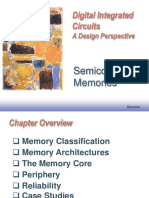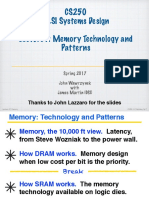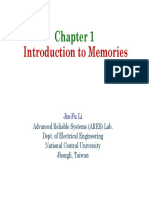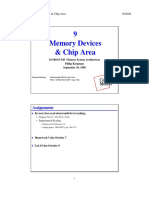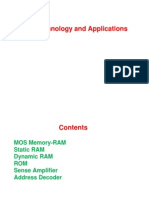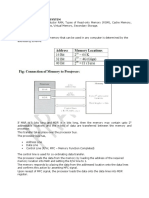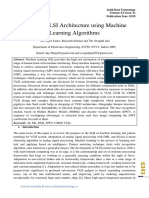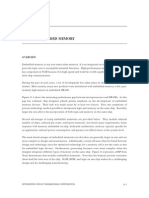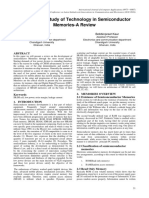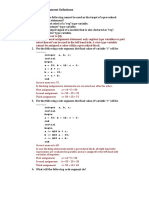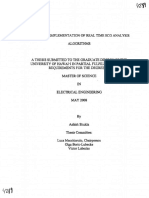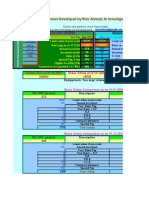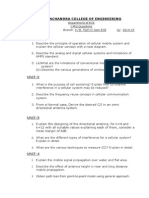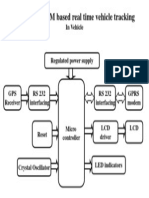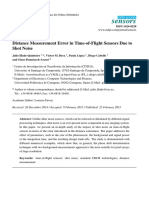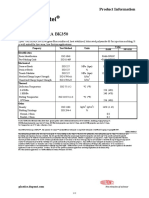0% found this document useful (0 votes)
142 views14 pagesDRAM Cell Design for Engineers
The document discusses various memory cell designs used in DRAM, including 1T, 3T, and novel cell designs like 2T1D and 3T1D cells. It proposes introducing a new cell design into the CACTI memory characterization tool by modifying the code to allow selecting between the default 6T SRAM cell or a new cell. The modifications, cell description and evaluations of configurations varying cache size, associativity, and block size on power and delay are to be documented and submitted along with the source code.
Uploaded by
saigdv1978Copyright
© © All Rights Reserved
We take content rights seriously. If you suspect this is your content, claim it here.
Available Formats
Download as PDF, TXT or read online on Scribd
0% found this document useful (0 votes)
142 views14 pagesDRAM Cell Design for Engineers
The document discusses various memory cell designs used in DRAM, including 1T, 3T, and novel cell designs like 2T1D and 3T1D cells. It proposes introducing a new cell design into the CACTI memory characterization tool by modifying the code to allow selecting between the default 6T SRAM cell or a new cell. The modifications, cell description and evaluations of configurations varying cache size, associativity, and block size on power and delay are to be documented and submitted along with the source code.
Uploaded by
saigdv1978Copyright
© © All Rights Reserved
We take content rights seriously. If you suspect this is your content, claim it here.
Available Formats
Download as PDF, TXT or read online on Scribd
/ 14


